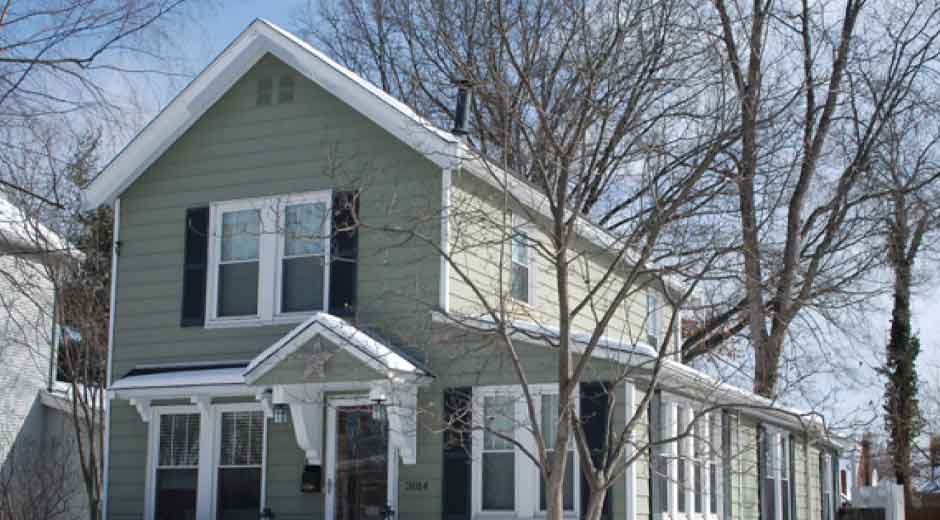The first frost hits, and it’s time to prepare for winter. While homeowners focus on tasks like swapping air filters or buying rock salt, costly problems often arise from overlooked details. Each year, insurance claims for preventable winter home damage soar. This guide covers key prep tips—from plumbing protection to emergency plans—to help you stay ahead.
Protect Your Pipes Before the Freeze
Water damage from frozen pipes ranks among the most expensive winter home disasters, yet pipe protection remains one of the most neglected preparation tasks. When water freezes, it expands by roughly 9%, creating enough pressure to burst even the strongest pipes.
Insulate Vulnerable Areas
Start by identifying pipes in unheated spaces like basements, crawl spaces, attics, and garages. These areas experience the most dramatic temperature swings and pose the highest risk for freezing. Wrap exposed pipes with foam pipe insulation or heat tape, paying special attention to pipes running along exterior walls.
Don’t forget about outdoor fixtures. Disconnect and drain garden hoses, then shut off water to exterior spigots. If your home has separate shut-off valves for outdoor water lines, close them and drain any remaining water from the pipes.
Maintain Consistent Temperature
Keep your thermostat set to the same temperature day and night throughout winter. While this may increase heating costs slightly, it prevents the temperature fluctuations that contribute to pipe freezing. For homes with problematic pipes, consider leaving cabinet doors open under sinks to allow warm air circulation around plumbing.
Seal Every Gap to Stop Energy Loss
Heat loss through gaps and cracks can increase your energy bills by 30% or more during the winter months. A comprehensive sealing strategy involves more than just checking windows and doors.
Address Windows and Doors
Inspect the caulking around all windows and door frames. Remove old, cracked caulk and apply fresh weatherproof sealant. Replace worn weatherstripping around doors, and consider adding door sweeps to exterior doors if gaps exist at the bottom.
Test your windows by holding a lit candle near the edges on a windy day. If the flame flickers, you’ve found an air leak that needs attention. For single-pane windows, storm windows or plastic film kits provide an additional barrier against cold air infiltration.
Don’t Forget the Garage
Your garage door creates one of the largest openings in your home’s envelope. Check the weatherstripping along the bottom and sides of your garage door. If the rubber seal appears cracked or has gaps when the door closes, contact a professional for garage door repair in St. George. A properly sealed garage door not only keeps cold air out but also prevents moisture and pests from entering.
Install weatherstripping around the door connecting your garage to your house, as this barrier significantly impacts your home’s overall energy efficiency.
Clear Gutters to Prevent Ice Dams
Ice dams form when snow melts on warm roof sections and refreezes at cooler eaves, creating barriers that force water under shingles. This seemingly minor issue can cause extensive damage to roofing, insulation, and interior walls.
Remove Debris Thoroughly
Clean all leaves, twigs, and debris from gutters and downspouts. Even small blockages can cause water to pool and freeze, starting the ice dam formation process. Ensure downspouts direct water at least six feet away from your foundation to prevent basement flooding when snow melts.
Inspect for Damage
While cleaning, check for loose or damaged gutter sections, missing brackets, and holes that need repair. Replace any damaged components before winter weather arrives, as repairs become much more difficult once temperatures drop consistently below freezing.
Consider installing gutter guards if your home sits near trees that shed significant debris. These systems reduce maintenance requirements and help maintain proper water flow throughout winter.
Service Your Heating System for Peak Performance
Heating system failures spike during the coldest weeks of winter when repair technicians face the highest demand. Proactive maintenance prevents breakdowns and ensures optimal efficiency when you need heat most.
Professional Inspection and Cleaning
Schedule a professional heating system inspection before cold weather arrives. Technicians can identify potential problems, clean essential components, and ensure safe operation. For gas systems, this includes checking for carbon monoxide leaks and ensuring proper ventilation.
Replace your furnace filter monthly during heating season, or more frequently if you have pets or family members with allergies. A clogged filter forces your system to work harder, increasing energy costs and shortening equipment lifespan.
Test Safety Systems
Check that all carbon monoxide and smoke detectors function properly, replacing batteries as needed. Test your thermostat by raising and lowering the temperature settings to ensure it communicates effectively with your heating system.
If you use a fireplace or wood stove, have the chimney professionally cleaned and inspected. Creosote buildup poses serious fire risks, and blocked flues can cause dangerous carbon monoxide accumulation.
Build a Comprehensive Emergency Kit
Winter storms can knock out power for days and make travel impossible. A well-stocked emergency kit ensures your family stays safe and comfortable during extended outages.
Essential Supplies
Stock at least three days’ worth of non-perishable food and water for each family member. Include a manual can opener, battery-powered or hand-crank radio, flashlights, and extra batteries. Pack warm blankets, extra clothing, and any necessary medications.
Keep a battery-powered or solar phone charger to maintain communication during outages. Store emergency supplies in an easily accessible location that all family members know about.
Backup Power Solutions
Consider investing in a portable generator for essential needs like refrigeration and heating system operation. Ensure you have adequate fuel storage and understand proper generator safety protocols, including never operating generators indoors or in enclosed spaces.
For homes with critical medical equipment, discuss backup power options with your healthcare provider and consider installing a whole-house generator system.
Conclusion
Prepare for winter by addressing overlooked tasks like pipe insulation, sealing, gutter maintenance, heating system checks, and emergency planning. Start early in autumn when conditions are ideal, and contractors are more available. These efforts save on energy costs, prevent damage, and ensure peace of mind. Pick one task to start this week and work through the rest before the first freeze.






